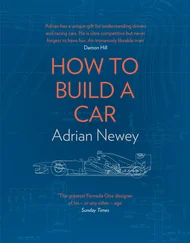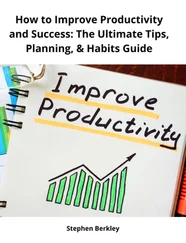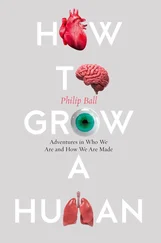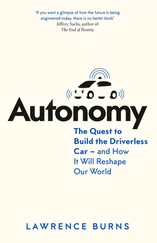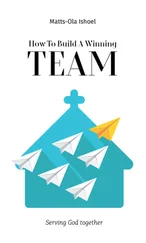Eyal, Nir - Hooked - How to Build Habit-Forming Products
Здесь есть возможность читать онлайн «Eyal, Nir - Hooked - How to Build Habit-Forming Products» весь текст электронной книги совершенно бесплатно (целиком полную версию без сокращений). В некоторых случаях можно слушать аудио, скачать через торрент в формате fb2 и присутствует краткое содержание. Год выпуска: 2014, Издательство: Nir Eyal, Жанр: Старинная литература, на английском языке. Описание произведения, (предисловие) а так же отзывы посетителей доступны на портале библиотеки ЛибКат.
- Название:Hooked: How to Build Habit-Forming Products
- Автор:
- Издательство:Nir Eyal
- Жанр:
- Год:2014
- ISBN:нет данных
- Рейтинг книги:5 / 5. Голосов: 1
-
Избранное:Добавить в избранное
- Отзывы:
-
Ваша оценка:
- 100
- 1
- 2
- 3
- 4
- 5
Hooked: How to Build Habit-Forming Products: краткое содержание, описание и аннотация
Предлагаем к чтению аннотацию, описание, краткое содержание или предисловие (зависит от того, что написал сам автор книги «Hooked: How to Build Habit-Forming Products»). Если вы не нашли необходимую информацию о книге — напишите в комментариях, мы постараемся отыскать её.
Hooked: How to Build Habit-Forming Products — читать онлайн бесплатно полную книгу (весь текст) целиком
Ниже представлен текст книги, разбитый по страницам. Система сохранения места последней прочитанной страницы, позволяет с удобством читать онлайн бесплатно книгу «Hooked: How to Build Habit-Forming Products», без необходимости каждый раз заново искать на чём Вы остановились. Поставьте закладку, и сможете в любой момент перейти на страницу, на которой закончили чтение.
Интервал:
Закладка:
The mind takes shortcuts informed by our surroundings to make quick and sometimes erroneous judgments. When Bell performed his concert in the subway station, few stopped to listen. But when framed in the context of a concert hall, he can charge beaucoup bucks.
But the framing heuristic not only influences our behaviors — it literally changes how our brain perceives pleasure. For example, a 2007 study attempted to measure if price had any influence on the taste of wine. [lxv]The researchers had study participants sample wine while in an fMRI machine.
As the machine scanned the blood flow in the various regions of their brains, the tasters were informed of the cost of each wine sampled. The sample started with a $5 wine and progressed to a $90 bottle. Interestingly, as the price of the wine increased, so did the participant's enjoyment of the wine. Not only did they say they enjoyed the wine more but their brain corroborated their feelings, showing higher spikes in the regions associated with pleasure. Little did the study participants realize, they were tasting the same wine each time. This study demonstrates how perception can form a personal reality based on how a product is framed, even when there is little relationship with objective quality.
The Anchoring Effect
Rarely can you walk into a clothing store without seeing signage for “30% off,” “buy-one-get-one free,” and other sales and deals. In reality, these items are often marketed to maximize profits for the business. Often, the same store will have similar but less expensive (yet non-discounted) products. I recently visited a store that offered a package of three Jockey brand undershirts at a buy-one-get-one-half-off discount for $29.50. After surveying other options, I noticed a package of five Fruit of the Loom brand undershirts selling for $34. After some quick math, I discovered that the shirts not on sale were actually cheaper per-shirt than the “discounted” brand’s package.
People often anchor to one piece of information when making a decision. I almost bought the shirts on sale assuming that the one feature differentiating the two brands — the fact that one was on sale and the other was not — was all I needed to consider.
The Endowed Progress Effect
Punch cards are often used by retailers to encourage repeat business. With each purchase, customers get closer to receiving a free product or service. These cards are typically awarded empty and in effect, customers start at zero percent complete. What would happen if retailers handed customers punch cards with punches already given? Would people be more likely to take action if they had already made some progress? An experiment sought to answer this very question. [lxvi]
Two groups of customers were given punch cards awarding a free car wash once the cards were fully punched. One group was given a blank punch card with 8 squares and the other given a punch card with 10 squares but with two free punches. Both groups still had to purchase 8 car washes to receive a free wash; however, the second group of customers — those that were given two free punches — had a staggering 82 percent higher completion rate. The study demonstrates the endowed progress effect, a phenomenon that increases motivation as people believe they are nearing a goal.
Sites such as LinkedIn and Facebook utilize this heuristic to encourage people to divulge more information about themselves when completing their online profiles. On LinkedIn, every user starts with some semblance of progress (figure 19). The next step is to “Improve Your Profile Strength” by supplying additional information. As users complete each step, the meter incrementally shows the user is advancing. Cleverly, LinkedIn’s completion bar jumpstarts the perception of progress and does not include a numeric scale. For the new user, a proper LinkedIn profile does not seem so far away. But even the “advanced” user still has additional steps she can take to inch toward the final goal.

Figure 19
***
Most people remain unaware of how heuristics help us make split-second decisions multiple times per day. Psychologists believe there are hundreds of cognitive biases that influence our behaviors and the four discussed here are just a few examples. [lxvii]For product designers building habit-forming technology, understanding and leveraging these methods for boosting motivation and ability can prove highly impactful.
Stephen Anderson, author of Seductive Interaction Design , created a tool called Mental Notes to help designers build better products through heuristics. [lxviii]Each of the cards in his deck of 50 contains a brief description of a cognitive bias and is intended to spark product team conversations around how they might utilize the principle. For example, team members might ask themselves how they could utilize the endowed progress effect or the scarcity effect to increase the likelihood of a desired user behavior.
In this chapter, we discovered how to take users from trigger to action. We discussed how cognitive biases influence behavior and how by designing the simplest action in anticipation of a reward, product makers can advance users to the next phase of the Hook Model.
Now that users have passed through the first two phases, it is time to give them what they came for — the reward that scratches their itch. But what is it exactly that users want? What keeps us coming back time and again to habit-forming experiences and technologies? The answer to what we’re all searching for is the topic of the next chapter.
***
Remember and Share
- Action is the second step in The Hook.
- The action is the simplest behavior in anticipation of reward.
- As described by the Dr. BJ Fogg’s Behavior Model:
- For any behavior to occur, a trigger must be present at the same time as the user has sufficient ability and motivation to take action.
- To increase the desired behavior, ensure a clear trigger is present, then increase ability by making the action easier to do, and finally align with the right motivator.
- Every behavior is driven by one of three Core Motivators: seeking pleasure or avoiding pain, seeking hope and avoiding fear, seeking social acceptance while avoiding social rejection.
- Ability is influenced by the six factors of time, money, physical effort, brain cycles, social deviance, and non-routineness. Ability is dependent on users and their context at that moment.
- Heuristics are cognitive shortcuts we take to make quick decisions. Product designers can utilize many of the hundreds of heuristics to increase the likelihood of their desired action.
***
Do This Now
Refer to the answers you came up with in the last “Do This Now” section to complete the following exercises:
- Walk through the path your users would take to use your product or service, beginning from the time they feel their internal trigger to the point where they receive their expected outcome. How many steps does it take before users obtain the reward they came for? How does this process compare with the simplicity of some of the examples described in this chapter? How does it compare with competing products and services?
- Which resources are limiting your users’ ability to accomplish the tasks that will become habits?
- Time
- Money
- Physical effort
- Brain cycles (too confusing)
- Social deviance (outside the norm)
Читать дальшеИнтервал:
Закладка:
Похожие книги на «Hooked: How to Build Habit-Forming Products»
Представляем Вашему вниманию похожие книги на «Hooked: How to Build Habit-Forming Products» списком для выбора. Мы отобрали схожую по названию и смыслу литературу в надежде предоставить читателям больше вариантов отыскать новые, интересные, ещё непрочитанные произведения.
Обсуждение, отзывы о книге «Hooked: How to Build Habit-Forming Products» и просто собственные мнения читателей. Оставьте ваши комментарии, напишите, что Вы думаете о произведении, его смысле или главных героях. Укажите что конкретно понравилось, а что нет, и почему Вы так считаете.


